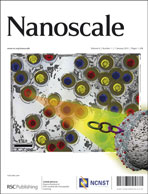A new contact mechanics model is presented and experimentally examined at the nanoscale. The current work addresses the well-established field of contact mechanics, but at the nanoscale where interaction stresses seem to be effective. The new model combines the classic Hertz theory with the new interaction stress concept to provide the stress field in contact bodies with adhesion. Hence, it benefits from the simplicity of non-adhesive models, while offering the same applicability as more complicated models. In order to examine the model, a set of atomic force microscopy experiments were performed on substrates made from single-walled carbon nanotube buckypaper. The stress field in the substrate was obtained by superposition of the Hertzian stress field and the interaction stress field, and then compared to other contact models. Finally, the effect of indentation depth on the stress field was studied for the interaction model as well as for the Hertz, Derjaguin–Muller–Toporov, and Johnson–Kendall–Roberts models. Thus, the amount of error introduced by using the Hertz theory to model contacts with adhesion was found for different indentation depths. It was observed that in the absence of interaction stress data, the Hertz theory predictions led to smaller errors compared to other contact-with-adhesion models.

You have access to this article
 Please wait while we load your content...
Something went wrong. Try again?
Please wait while we load your content...
Something went wrong. Try again?


 Please wait while we load your content...
Please wait while we load your content...